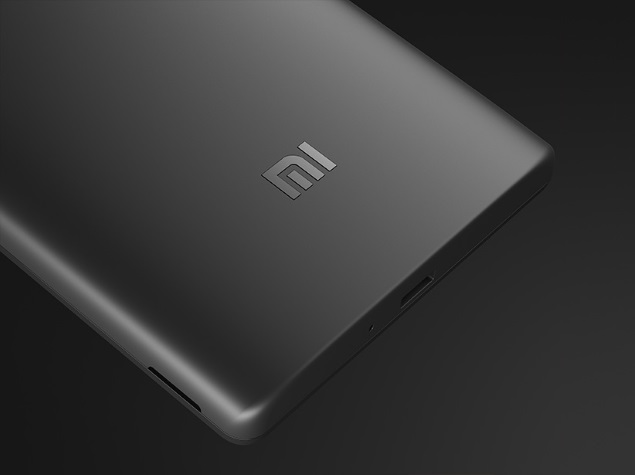- Home
- Mobiles
- Mobiles News
- Xiaomi MIUI Cloud Messaging Made an 'Opt In Service' After Security Concerns
Xiaomi MIUI Cloud Messaging Made an 'Opt-In Service' After Security Concerns

Now, a new related report by security firm F-Secure has again raised privacy concerns as it has highlighted that the Xiaomi Redmi 1S was sending details such as the handset's IMEI number, phone number, contacts stored and text messages exchanged to a server named api.account.xiaomi.com.
Following security concerns, Xiaomi has now finally decided to make its offending service, MIUI Cloud Messaging, an opt-in one. It will be no longer be set as an automatic process by default for handset users. The company also revealed that it released an over-the-air (OTA) update on Sunday that will add an extra layer of security by encrypting phone numbers whenever they are sent to cloud messaging servers.
Xiaomi's Hugo Barra, Vice President, Xiaomi Global on Sunday announced the news in a Google+ post titled, "MIUI Cloud Messaging and Privacy," and also tried to address privacy concerns about Xiaomi smartphones raised by some recent reports.
Barra said, "Xiaomi offers a free service called Cloud Messaging as part of its MIUI operating system. This service allows MIUI users to exchange text messages with each other free of SMS charges, by routing messages via IP instead of using the carrier's SMS gateway."
About F-Secure's claim that the Redmi 1S was sending information like IMEI, phone number, contacts and texts, Barra explained, "When a Mi phone is turned on, the cloud messaging service is automatically activated through IP communication protocol with Xiaomi servers, in order to provide the user with the free text messaging capability. MIUI Cloud Messaging uses SIM and device identifiers (phone number, IMSI and IMEI) for routing messages between two users, in the same way as some of the most popular messaging services."
Further Barra said, "As we believe it is our top priority to protect user data and privacy, we have decided to make MIUI Cloud Messaging an opt-in service and no longer automatically activate users. After the upgrade, new users or users who factory reset their devices can enable the service by visiting Settings > Mi Cloud > Cloud Messaging from their home screen or Settings > Cloud Messaging inside the Messaging app - these are also the places where users can turn off cloud messaging."
You can read Hugo Barra's complete Google+ post here:
Get your daily dose of tech news, reviews, and insights, in under 80 characters on Gadgets 360 Turbo. Connect with fellow tech lovers on our Forum. Follow us on X, Facebook, WhatsApp, Threads and Google News for instant updates. Catch all the action on our YouTube channel.
Related Stories
- Samsung Galaxy Unpacked 2025
- ChatGPT
- Redmi Note 14 Pro+
- iPhone 16
- Apple Vision Pro
- Oneplus 12
- OnePlus Nord CE 3 Lite 5G
- iPhone 13
- Xiaomi 14 Pro
- Oppo Find N3
- Tecno Spark Go (2023)
- Realme V30
- Best Phones Under 25000
- Samsung Galaxy S24 Series
- Cryptocurrency
- iQoo 12
- Samsung Galaxy S24 Ultra
- Giottus
- Samsung Galaxy Z Flip 5
- Apple 'Scary Fast'
- Housefull 5
- GoPro Hero 12 Black Review
- Invincible Season 2
- JioGlass
- HD Ready TV
- Laptop Under 50000
- Smartwatch Under 10000
- Latest Mobile Phones
- Compare Phones
- Redmi Note 15 5G
- Redmi Note 15 Pro 5G
- Redmi Note 15 Pro+ 5G
- Lava Play Max
- Poco C85 5G
- Honor Magic 8 Lite
- Jolla Phone
- Realme P4x 5G
- Asus ProArt P16
- MacBook Pro 14-inch (M5, 2025)
- OnePlus Pad Go 2
- Poco Pad M1
- Just Corseca Skywatch Pro
- Honor Watch X5
- Acerpure Nitro Z Series 100-inch QLED TV
- Samsung 43 Inch LED Ultra HD (4K) Smart TV (UA43UE81AFULXL)
- Asus ROG Ally
- Nintendo Switch Lite
- Haier 1.6 Ton 5 Star Inverter Split AC (HSU19G-MZAID5BN-INV)
- Haier 1.6 Ton 5 Star Inverter Split AC (HSU19G-MZAIM5BN-INV)
-
 Astronomers Observe Star’s Wobbling Orbit, Confirming Einstein’s Frame-Dragging
Astronomers Observe Star’s Wobbling Orbit, Confirming Einstein’s Frame-Dragging
-
 Galaxy Collisions Found to Activate Supermassive Black Holes, Euclid Data Shows
Galaxy Collisions Found to Activate Supermassive Black Holes, Euclid Data Shows
-
 JWST Detects Oldest Supernova Ever Seen, Linked to GRB 250314A
JWST Detects Oldest Supernova Ever Seen, Linked to GRB 250314A
-
 Chandra’s New X-Ray Mapping Exposes the Invisible Engines Powering Galaxy Clusters
Chandra’s New X-Ray Mapping Exposes the Invisible Engines Powering Galaxy Clusters










